- +254 798 216 143
- sales@tingashare.com
- Baba Dogo Road, Ruaraka, Nairobi, Kenya
In construction, earthworks are unavoidable. If the building is a lifetime project, earthwork is the insurance of this life project. Indeed, earthworks are a guarantee of stability and durability for a future building or structure. It consists of optimally preparing the ground that will accommodate the infrastructure. And depending on the specificities of the land, earthworks involve operations that are as complex as they are varied. If in general such work is entrusted to professionals in the construction trades, it is also wise to know the basics to better guide and carry out a project. It would even be possible to undertake this work yourself for an individual project. But then how
to define earthwork ? Why is it necessary ? How is it conducted and what are the different types ? Earthwork: definition and principle
What are earthworks?
Imagine yourself in possession of a sloping land or whose surface is irregular and on which you plan to build ! Unless you want to create an architectural work that defies the laws of nature, you must level your ground first. And that’s where earthworks come in.
Earthwork includes land development operations with the aim of setting up construction there. In other words, it consists in preparing a ground on which you want to build or reinforce a structure (building, road, dam) or carrying out an external installation (terrace, garden, swimming pool, garage, car-park, etc). This is a capital point of the structural work in the steps of a building.
Earthwork principle
To do his job, the digger, equipped with the appropriate equipment such as earthmoving machinery, will shape the soil by digging it in specific places and moving large quantities of earth. It is as a true field sculptor that he works. And depending on the ground aspect, he can also bring earth to it in order to fill in concave zones. Earthworks are said to consist of digging and filling earth.
Excavations carrying out
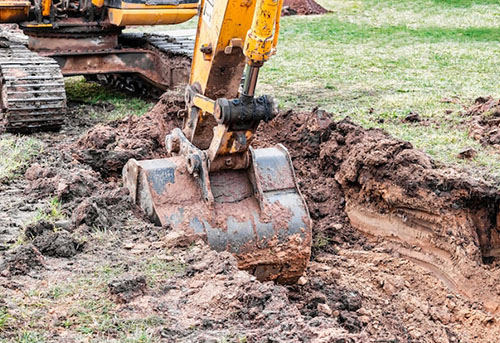
Excavation consists of removing earth or rubble from land in order to level or lower it. Different techniques can be used to achieve this depending on the type of soil (rocky, loose, etc.). For example, it is during excavation work that a mechanic shovel will dig a trench where pipes will later be buried.
After earth extraction, it is transported to the landfill or to the waste collection centre. Depending on the soil quality, it can be sorted on site if necessary to reuse as backfill. It is sometimes also possible to monetize the removed land from operators of farms, quarries or building sites.
Backfill
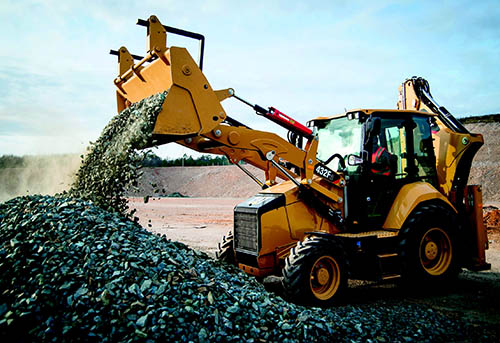
A backfilling operation is the addition of materials (earth, sand, gravel, etc.) to the ground in order to level or raise it. The backfill can then be compacted with a construction machine such as a compactor. The objective of this manoeuvre is to bridge any gaps in the terrain and obtain a stable construction platform that resists natural ground movements.
Excavation digging and backfilling bring the natural terrain with its roughness and faults to the technical level required by the project.
Why are earthworks important?
A civil engineering work or an outdoor development offering guarantees of safety first requires successful earthworks. Indeed, earthworks make it possible to properly establish the structure to be built. Since each construction project has its own specifications, the land must be adapted to the project requirements. Earthworks therefore correct the morphological defects of the soil in order to make it suitable for the construction. Thus, soil can be stable, solid and resistant, without putting its users in danger of flooding, subsidence, landslide, collapse or other dangerous ground deformations.
Moreover, it is thanks to the earthworks that the ground is optimally prepared for connection operations to the various networks (electricity, drinking water, telecommunications, etc.) and water drainage.
In short, a well-graded site facilitates construction work and ensures the quality and durability of the structure to be carried out. Neglecting this step can later lead to serious damage requiring heavy and expensive repairs.
Measures to take before earthworks
In order to maximize earthworks success, some measures should be taken beforehand.
Soil study
This step allows to know the composition and the nature of the ground to be levelled. And thanks to the results obtained, the earthmoving company will know what actions to take during its service. For example, depending on the nature of the project, dense soil will require less earthworks than sedimentary soil. In the same way, the professional digger will not work a clay-dominant soil in the same way as a calcareous soil.
Even if it is not a systematically mandatory procedure, soil study is strongly recommended.
Land staking
It is the surveyor who intervenes at this stage. He is responsible for measuring and materializing the limits of the land to be built (or the layout if it is a road). Its expertise also makes it possible to define the height and the limit of the zones to be dug or to be filled and to identify the zones dedicated to the pipes. In a way, it is an operation that directs and supervises the earthworks so that they respect the architect’s plans.
This step is particularly interesting because it makes it possible to delimit the circulation and storage areas. Given the flow of workers and construction machinery mobilized, it is crucial to take the right safety measures on a construction site.
Moreover, by marking the official limits of the land, picketing makes it possible to carry out work which will not be subject to dispute between neighbours.
Before earthworks: stumping, various demolitions and stripping
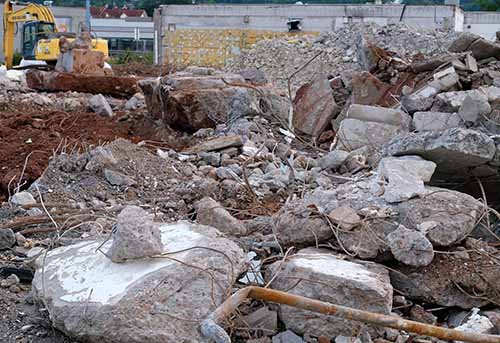
In its natural state, building land may contain many elements that are unsuitable for construction work. It can be trees, rocks, old infrastructure or various debris that will interfere with the earthworks.
These elements are therefore cleared using appropriate tools or construction machinery (chainsaw, pickaxe, concrete grinder, bulldozer, excavator, dump truck, etc.). Then we proceed to the stripping or disbursement which consists in removing the vegetal layer (surface layer) of the earth. This layer, generally 0.2 to 0.4 m thick and composed of plants and organic waste, is very unstable and therefore unsuitable for construction. Once removed, it can be stored to be reused later or not to develop green spaces, for example.
In addition, the presence of stagnant or dripping water can compromise the quality of the foundations. In this case, the water is evacuated before starting the earthworks. The creation of a minimum slope of 5% and drains laying are then indicated. Moreover, it is preferable to do earthworks in dry season to avoid soil moisture problems.
The different types of earthworks
Earthmoving has a very wide field of action. From one construction project to another, certain operations will be necessary or not. The types of earthworks commonly encountered on construction sites are as follows.
Surface or general earthwork
In this category of earthworks, the work carried out simply makes it possible to level a relief zone. This type of earthwork can be used to create a driveway or a garden, for example. Stripping is also sometimes considered as general earthwork.
Classic or ordinary earthwork
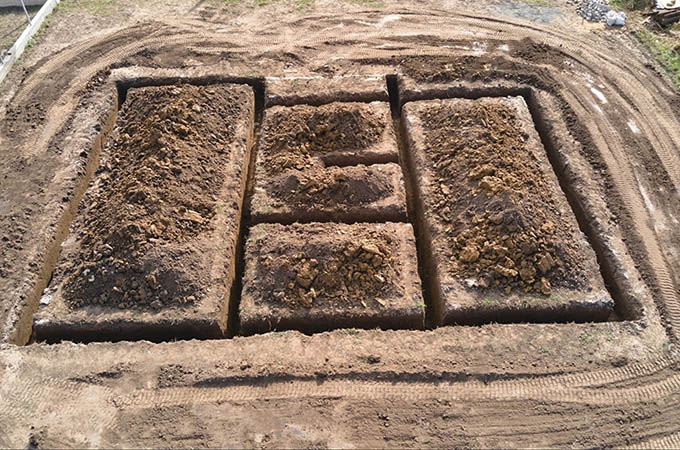
When it comes to new construction or the development of a building or structure, this type of earthwork is used.
To this end, the earthworks will concern the usual operations of digging and backfilling, but also the excavations digging intended to receive the concrete of the foundation soles.
Earthworks by suction
This newer form of earthwork has the same functions as classic earthwork. But instead of conventional machines (excavator, backhoe, bulldozer, etc.), a suction excavator or vacuum truck is used. It is a more effective and faster technique, but it can be more expensive.
Earthworks in excavation
This type of earthwork is referred to when it comes to preparing the ground for the construction of a buried structure. It can be a swimming pool, a basin, an all-water pit or an underground room. The earthworks company then carries out large excavations below ground level. The volume of soil removed is much greater in this case.
Roads and Public Utilities earthworks
Roads and Public Utilities include, on the one hand, construction work on roads allowing the free movement of a population. On the other hand, they concern with operations to connect structures or homes to existing public networks (energy, water, telecommunications, water drainage).
And in the implementation of Roads and Public Utilities works, whether construction or development, earthworks remain inevitable.
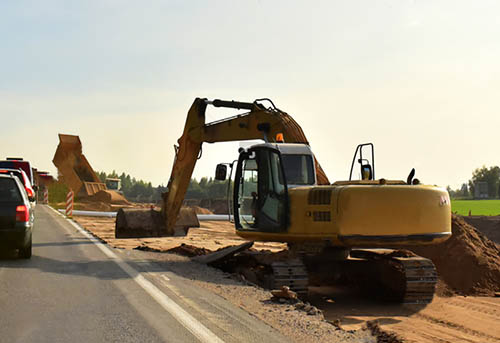
Indeed, to build a civil engineering structure (road, railway, bridge, etc.), it is just as necessary to prepare the ground. The digger then intervenes to carry out digging, backfilling and dig excavations for the foundations. Also, trenches are formed for the burial of pipes and cables of networks and piping.
Moreover, in the context of the construction of a house or a building, the earthworks will make it possible to make the land viable by connecting it to the various networks. They also make it possible to create waste and rainwater drainage systems.
Other forms of earthwork
For sloping land, there are also other types of earthworks such as riprap and embankment.
Riprap is used to contain land that can collapse near a house or a road using rocks. Embankment is based on the same principle, except that instead of using rocks, a sufficient slope of the ground is created around the structure to eliminate the thrust of the raised ground.
